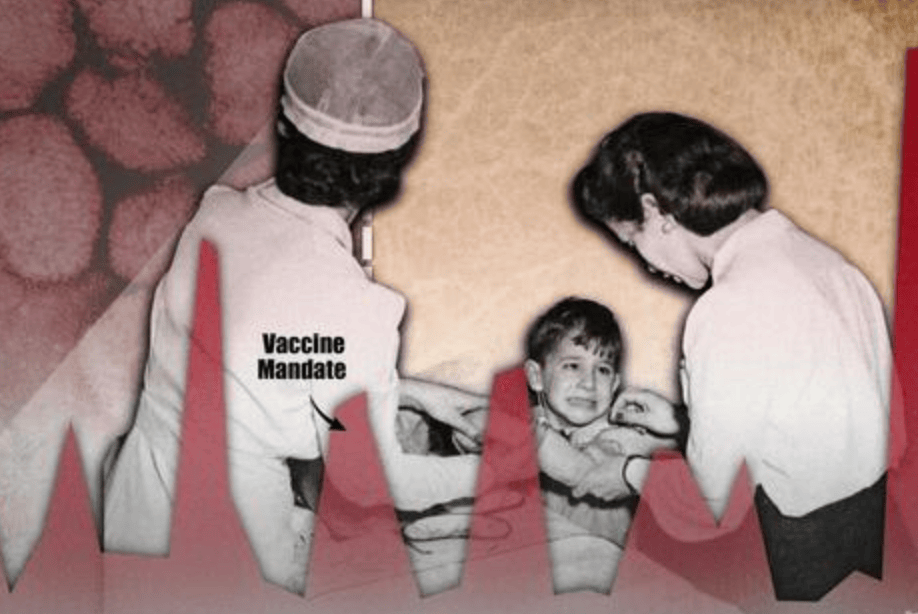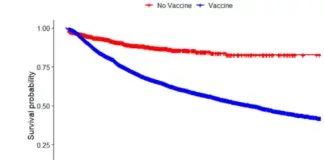Is there solid evidence to prove that the smallpox vaccine eradicates smallpox waves? A deep dive into the literature has resulted in surprising findings.
In this series, we will explore the multifaceted history of vaccines, examine historical data, and seek a nuanced understanding of vaccine efficacy and safety.
The widespread faith in vaccines is often traced back to the assumption that the first vaccine in human history effectively eradicated one of the deadliest pandemics. However, does this belief hold true?
The campaign integrated mass vaccination programs, surveillance of outbreaks, and rapid response to any reported cases. By 1977, the last natural case of smallpox was recorded in Somalia, leading to the WHO’s declaration of smallpox eradication in 1980.
Yet this begs the question: Is there any direct evidence that the infection or mortality rate has declined due to vaccination?
US: No Decline After Vaccination
Dr. Suzanne Humphries, an internist and board-certified nephrologist has practiced medicine in conventional hospital settings for over 20 years. The graphs below represent some key facts from her book about smallpox, “Dissolving Illusions.”
She spent countless hours at Yale’s medical library and other libraries scouring medical journals, books, and newspapers to locate mortality data and create computerized graphs.
Records from Boston, starting in 1811, reveal recurring smallpox epidemics beginning around 1837. Despite the introduction of vaccination mandates in 1855, epidemics continued to occur in 1859 to 1860, 1864 to 1865, and 1867, with a particularly severe outbreak from 1872 to 1873. The continual reoccurrence of these epidemics in Massachusetts indicates that stringent vaccination regulations had no positive impact on curbing smallpox.
Europe: No Decline After Vaccination
Throughout the Western world, epidemics were more severe in highly-vaccinated populations.
England
In England, the smallpox vaccination became compulsory in 1853.
The death rate for smallpox declined after 1872, but there is no evidence that vaccination had anything to do with it. In the early 1900s, death from smallpox all but vanished from England.
France
During the Franco-Prussian War from July 1870 to January 1871, the French army had 23,469 smallpox cases and every army recruit was required to be vaccinated.
Germany
In Bavaria, Germany in 1871, nearly 96 percent of all smallpox cases occurred in vaccinated individuals (29,429 of 30,742).
Italy
In 1888, despite a population in Italy that was extensively vaccinated and revaccinated, smallpox wreaked havoc in numerous towns. Many of these towns had adhered to a biannual vaccination regimen for several years.
- Badolato recorded 1,200 smallpox cases (population 3,800).
- Guardavalle had 2,300 cases (population 3,500).
- St. Caterina del Jonio had 1,200 cases (population 2,700).
- Sortino documented 570 deaths (population 9,000).
- San Cono had 135 deaths (population 1,600).
- Vittoria reported a staggering 2,100 deaths (population 2,600).
Dr. Ruata wrote: “Can you cite anything worse before the invention of vaccination? And, the population of these villages is perfectly vaccinated, as I have proved already, not only, but I obtained from the local authorities a declaration that vaccination has been performed twice a year in the most satisfactory manner for many years past.”
Japan: No Decline After Vaccination
Dr. Simon Katzoff reported that compulsory vaccination laws began in Japan in 1872, and stricter revaccination mandates were passed in 1885. Laws required infants to be vaccinated and revaccinated up to three times within their first year if the first attempt was unsuccessful, then every year after that for seven years.
However, these measures didn’t prevent outbreaks. Smallpox remained rampant.
Between 1885 and 1892, with over 25 million vaccinations and revaccinations, there were still 156,175 smallpox cases and 39,979 deaths. From 1892 to 1897, Japan recorded 142,032 smallpox cases and 39,536 deaths.
Even after an 1896 law mandating vaccination every five years for everyone, the country saw 41,946 cases and 12,276 deaths in 1897 alone—a 32 percent mortality rate—almost double the rate before the vaccination era.
Smallpox Waves Fluctuate, Independent of Vaccinations
Based on the smallpox waves noted above, the virus appears to independently fluctuate, regardless of vaccination.
It’s important to note that these changes occurred independent of vaccination efforts, suggesting that factors other than the vaccine played a significant role in declining smallpox rates.
Some researchers propose that either a decrease in the virulence of the smallpox virus, or the natural progression of the disease through susceptible populations, could explain the decline in cases independent of vaccination efforts.
Mandatory vaccination laws have proven to be ineffective in controlling smallpox outbreaks. This is similar to what we saw with COVID-19 during the past four years; new mutants would come and go, regardless of vaccination mandates.
No clear link was found at the country level between the fully vaccinated percentage of the population and the number of new COVID-19 cases reported. Interestingly, the trend even hints at a slight increase in COVID-19 cases per million people in countries with a higher vaccination rate. For example, Israel, despite more than 60 percent of its population being fully vaccinated, recorded the highest number of COVID-19 cases per million people in the last week.
In the 2,947 counties in the United States, there was no sign of decreased COVID-19 cases associated with higher vaccination rates.
Any Direct Evidence of Vaccine Efficacy?
Are there any clinical trials comparing a smallpox-vaccinated group with an unvaccinated group of the same size? Is there direct evidence from the scientific literature substantiating that vaccination programs have played a crucial role in eradicating smallpox waves? No such evidence was found.
Sourced from four articles, Dr. Mahoney’s paper, states, “Vaccine efficacy is 95% among vaccinees in whom a 1-2 cm loculated and umbilicated pustule (called a Jennerian pustule) is noted 6-8 days after inoculation.”
This study was conducted by nine researchers from the Department of Pediatrics, University of California at San Diego and Los Angeles, and supported by the NIH.
The prestigious study involving a group of 786 children looked at the effectiveness and side effects of four smallpox vaccines given at different concentrations. Results showed that three licensed vaccines (New York City Board of Health strains grown in calf lymph or chorioallantoic membrane, and the Lister vaccine) were similarly effective.
Vaccine effectiveness was assessed by the vaccinee’s response, especially by observing any significant reactions around the tenth day, typically involving a central lesion occurring after the seventh day.
The WHO’s assertion of 95 percent efficacy appears to be grounded in the fact that 97 percent of children exhibited both a “major reaction” (take) and a serologic take. However, this doesn’t constitute direct evidence of the vaccine’s role in eradicating smallpox disease; it merely indicates the presence of a scar on the skin and an antibody response in the blood among vaccinated individuals.
Regardless of skin take, serological take, or immune memory, it’s important to note that these observations belong to indirect support rather than direct clinical protection. There is an undeniable gap between the investigative data and the statement that smallpox was eradicated by the vaccine.
Why Smallpox Vaccines Have Not Worked
Why are smallpox vaccines not as effective as we may have thought?
The answer resides in two fundamental components of our immune system: natural or innate immunity versus adaptive immunity.
Our body’s immune system can be roughly separated into five layers. The first three layers are considered innate or natural immunity, which includes our skin, nose, and eyes; the mucosal epithelial cells in the respiratory or gastroenterological tracks which secrete powerful antiviral proteins such as interferon; and the innate immune cells such as natural killer cells and macrophages capable of eradicating invading viruses. The last two layers of immunity are specialized task forces. They involve T cells and B cells that can generate virus-specific cellular immunity or antibodies.
Disclaimer: We at Prepare for Change (PFC) bring you information that is not offered by the mainstream news, and therefore may seem controversial. The opinions, views, statements, and/or information we present are not necessarily promoted, endorsed, espoused, or agreed to by Prepare for Change, its leadership Council, members, those who work with PFC, or those who read its content. However, they are hopefully provocative. Please use discernment! Use logical thinking, your own intuition and your own connection with Source, Spirit and Natural Laws to help you determine what is true and what is not. By sharing information and seeding dialogue, it is our goal to raise consciousness and awareness of higher truths to free us from enslavement of the matrix in this material realm.
 EN
EN FR
FR



























